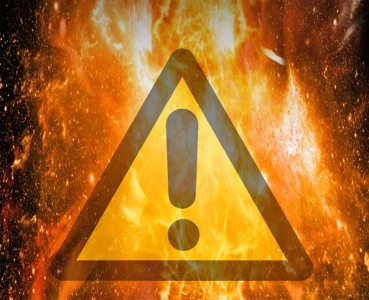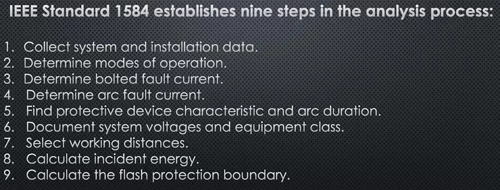Benefits of Arc Flash Hazard Analysis

Arc flash hazard analysis, when performed meticulously, provides far-reaching benefits that extend beyond regulatory compliance. Organizations committed to a comprehensive electrical safety program reap rewards in the form of enhanced worker protection, improved system reliability, and even operational gains.
Arc flash hazard analysis is an essential component of electrical safety management, aimed at identifying and mitigating the risks associated with arc flash incidents. This process is not only about compliance with safety standards but also about enhancing the overall safety and efficiency of electrical systems.
Visit Our Arc Flash Study Course
The Paramount Benefit: Worker Safety
- Accurate PPE Selection: Detailed incident energy calculations allow for the precise specification of PPE categories (Personal Protective Equipment). This ensures workers wear the appropriate level of protection and are not burdened with overly restrictive equipment if unnecessary.
- Safe Work Practices and Procedures: An analysis informs the creation of procedures around energized work, including establishing arc flash boundaries, defining lockout/tagout requirements, and guiding the safe use of tools and test equipment.
- Empowered Workforce: Providing workers with arc flash hazard labels and training them thoroughly empowers them to make informed choices about risk, leading to a more safety-conscious work environment.
System Reliability and Reduced Downtime
- Equipment Protection: Arc flash studies can highlight areas where excessive potential incident energy might overwhelm the ratings of existing switchgear or circuit breakers. Upgrades or modifications can prevent equipment failures and associated shutdowns caused by arc flash events.
- Targeted Predictive Maintenance: Subtle patterns or weaknesses in equipment revealed during analysis can guide predictive maintenance programs. Addressing deteriorating components proactively reduces unplanned breakdowns and improves system availability.
- Optimized Protective Device Coordination: The analysis facilitates evaluation of fuse and circuit breaker coordination. Strategically adjusting settings can minimize the impact of faults, confining outages to smaller areas, promoting faster recovery, and preserving uptime.
Enhanced Safety Through Thorough Analysis
The primary benefit of conducting a comprehensive arc flash hazard analysis is the significant enhancement of workplace safety.
Protection of Personnel
By accurately identifying potential arc flash hazards and specifying the necessary protective measures, such as personal protective equipment (PPE) and safety protocols, the analysis plays a crucial role in protecting personnel from the severe injuries that arc flash incidents can cause.
Risk Identification and Mitigation
A thorough analysis helps in identifying the specific risks associated with different parts of the electrical system. This enables the implementation of targeted mitigation strategies, such as equipment upgrades, system redesign, or changes in operational procedures, to reduce the likelihood of arc flash incidents.
Improved System Reliability and Performance
Comprehensive arc flash hazard analysis also contributes to the reliability and performance of electrical systems.
System Design and Maintenance
Understanding the potential arc flash hazards can influence the design and maintenance of electrical systems. By integrating arc flash considerations into system design, organizations can ensure that the electrical systems are both safe and optimized for performance.
Preventive Maintenance and Upgrades
Regular arc flash hazard analysis supports preventive maintenance strategies. It helps in identifying and rectifying potential issues before they lead to system failure, thereby reducing unplanned downtime and extending the lifespan of electrical equipment.
Reduced Downtime and Operational Costs
The financial benefits of conducting a comprehensive arc flash hazard analysis are significant, particularly in terms of reducing downtime and operational costs.
Minimizing Unplanned Outages
By preventing arc flash incidents, organizations can minimize unplanned outages, which often result in significant operational and financial impacts. Reduced downtime means maintaining productivity and avoiding the high costs associated with system failures and repairs.
Insurance and Liability
A well-documented arc flash hazard analysis can also have positive implications for insurance premiums and liability. Demonstrating a commitment to safety through comprehensive analysis and mitigation strategies can lead to lower insurance costs and reduced liability in the event of an incident.
Technical Considerations and Best Practices
For an arc flash hazard analysis to be effective, it must be conducted with technical rigor and adherence to best practices.
Adherence to Standards
Following established standards like NFPA 70E and IEEE 1584 ensures that the analysis is comprehensive and meets the legal and regulatory requirements for workplace safety.
Continuous Review and Update
Electrical systems and operational conditions can change over time, which means that arc flash hazard analysis is not a one-time task. Regular reviews and updates are necessary to account for system modifications, changes in equipment, and evolving safety standards.
Conclusion
Conducting a comprehensive arc flash hazard analysis offers numerous benefits, including enhanced safety for personnel, improved reliability and performance of electrical systems, and reduced operational costs. By prioritizing this critical safety process, organizations can protect their employees, optimize their electrical systems, and minimize the financial and operational risks associated with arc flash incidents. Implementing a continuous and thorough approach to arc flash hazard analysis is essential for maximizing safety and efficiency in any organization relying on electrical systems.






